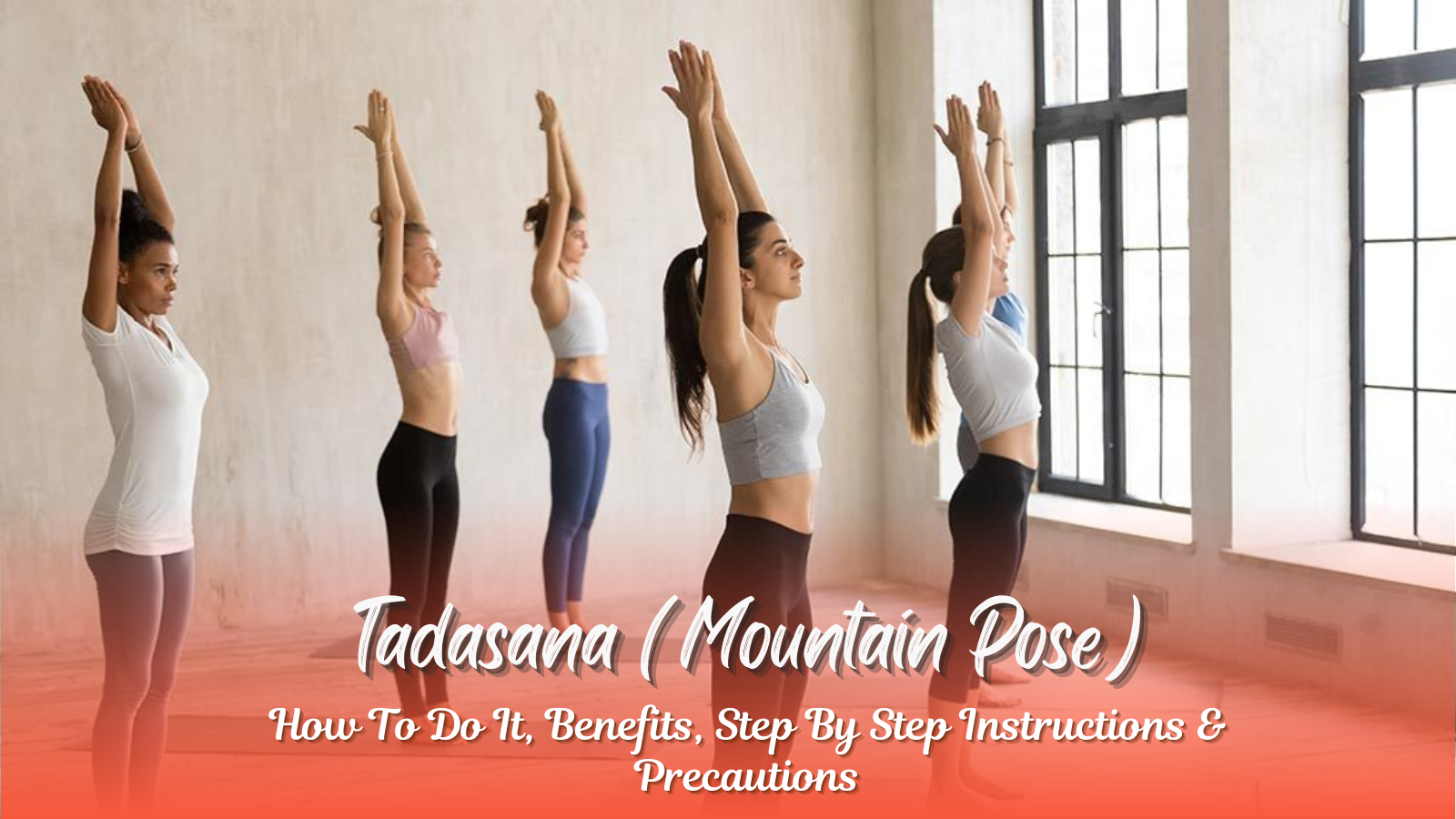Introduction to Tadasana (Mountain Pose):
Tadasana or the Mountain Pose is the initial all standing asana in the yoga system which forms the base for several other poses. Looks rather easy, but this is perhaps one of the most potent stances for the human body which can open a wealth of physical and mental advantages. The word “tada” signifies a mountain in Sanskrit which symbolizes stability and stillness, and hence the name of this pose.
Tadasana is often used as a starting position for other standing poses in yoga practice and can be practiced by yogis of all levels.
Benefits of Tadasana:
Tadasana holds a lot of benefits that go beyond the physical aspect of aligning the body. This pose has multiple positive effects on the body including:
1. Strengthens legs: These muscles include the thighs and the knees, and from this practice, practicing Tadasana often will help build strong legs. Ideally, if you maintain the positions longer, you will keep on experiencing the contraction of your muscles until they build up to become stronger.
2. Improves posture: It is now a culture that we spend most of our times leaning forward and therefore our postures have affected our bodies. Tadasana also helps modify the entire body posture because the spine assumes a proper alignment and realigns the imbalanced parts of the body.
3. Increases focus: When holding this yoga pose it is advisable to listen to your breath and in doing so, your concentration is most likely to be on some aspect of the pose.
4. Calms the mind: As mentioned earlier Tadasana involves immobilization which can go a long way in reducing the rate of thinking thus reducing stress and anxiety.
5. Enhances body awareness: Performing this position can assist you in developing an understanding of the body structure and how the separate areas as a whole effort contributes to stability.
Step-by-Step Instructions:
Follow these steps to practice Tadasana correctly:
1) ) Place your right foot parallel to the shoulder line, that is they should be hip width apart with toes facing forwards.
2) Stand on both feet to reduce the weight force on both the lower and upper limbs.
3) Engage your thigh muscles and lift your kneecaps.
4) Lengthen your tailbone towards the floor, creating a neutral pelvis.
5) Roll your shoulders back and down, opening up your chest.
6) Keep your arms relaxed at your sides with palms facing forward.
7) Gently tuck in your chin to lengthen the back of the neck.
8) Softly gaze forward with a relaxed facial expression.
Precautions:
While Tadasana is generally safe for most people, it is important to keep these precautions in mind while practicing:
1. Avoid this pose if you have low blood pressure or suffer from headaches as it can further lower blood pressure.
2. If you have any knee or ankle injuries, consult a doctor before practicing this pose as it involves standing for an extended period on one leg.
3. Pregnant women avoid performing Tadasana without proper guidance from an instructor.
Tadasana is also a very basic and effective pose that has many beneficial effects on the body and mind, if practiced with precision. Pregnant women should try to avoid certain postures and stresses that their body does not let them do, and it is always advisable to consult the certified instructors. Although Tadasana may still seem difficult to you, it can strengthen, stabilize, and calm you when done correctly during a yoga session or in daily life.
Frequently Asked Questions about Tadasana:
1. Is Tadasana suitable for beginners?
Yes, Tadasana is a simple and basic yoga pose that can be practiced by anyone, including beginners. It is a great way to start your yoga journey as it helps in building strength and flexibility.
2. How long should I hold the pose?
It is recommended to hold the pose for 30 seconds to 1 minute, depending on your comfort level. You can gradually increase the time as you get more comfortable with the pose.
3. Can pregnant women practice Tadasana?
Pregnant women can safely practice Tadasana, but it is always advisable to consult with your doctor first before starting any new exercise routine during pregnancy.
4. Can Tadasana help improve posture?
Yes, practicing Tadasana regularly can improve posture and alignment of the spine. It also strengthens the muscles of the back, shoulders, and neck which are essential for maintaining good posture.
5. Are there any variations of Tadasana?
Yes, there are various variations of Tadasana that you can try based on your level of experience and fitness goals. Some common variations include Raised Hands Pose (Urdhva Hastasana), Half Forward Bend (Ardha Uttanasana), and Extended Triangle Pose (Utthita Trikonasna).
6.Is it normal to feel discomfort or strain while holding the pose?
It is common to feel some discomfort or strain while holding this pose at first, especially if you have tight muscles or limited flexibility in certain areas of your body like hamstrings or shoulders. However, if you experience intense pain or discomfort, it is important to listen to your body and come out of the pose slowly.
7.Can I do Tadasana if I have high blood pressure?
Tadasana is generally safe for people with high blood pressure; however, it is recommended to avoid raising your hands overhead if you have uncontrolled high blood pressure. It is always advisable to consult with your doctor before practicing any yoga pose if you have a medical condition.
8. Is there a specific time of day to practice Tadasana?
Tadasana can be practiced at any time of the day, but the best time would be in the morning on an empty stomach. This helps in energizing and preparing the body for the day ahead.
9. Can children practice Tadasana?
Yes, children can safely practice Tadasana, but it is important to guide them properly and ensure they are not putting strain on their developing bodies.
Tadasana is comparatively an easier but very effectual yoga pose that is beneficial in various ways for both physical and mental health. Whether you’ve been practicing yoga for a week, a month or for many years this health improving exercise is ideal to include in your program. Do not rush, pay attention to how your body feels, and what feelings are associated with the practice – these are important lessons that help unveil the real meaning of Tadasana.
Conclusion: Incorporating Tadasana into Your Daily Routine
Tadasana if practiced regularly as a part of the daily routine could be of great help in correcting postures. It also corrects the spine and shoulder and hip alignment and strengthens the muscles of the stomach. By doing this pose at least once, you train your body to keep the right posture even if not holding the pose.
In addition to this, Tadasana also assists in the development of balance and stability in our bodies. Since you are standing straight with your feet placed on the floor, you exercise those muscles of feet and legs that help to balance the body. In the long run, it can reduce risk of falling and sustaining injuries due to balance issues.
They also act as calming poses to the mind because they facilitate deep and controlled breathing. In this pose, you can see that controlling the breath is one of the effective ways of clearing the tension and stress from the muscles and the brain. And with regular practice, it can help alleviate anxiety disorders too.


